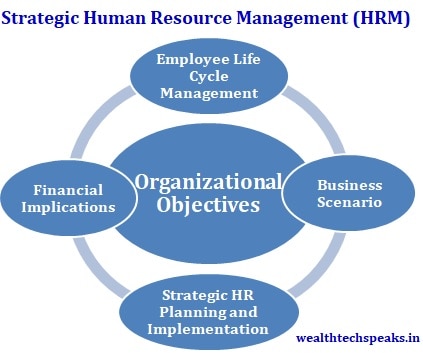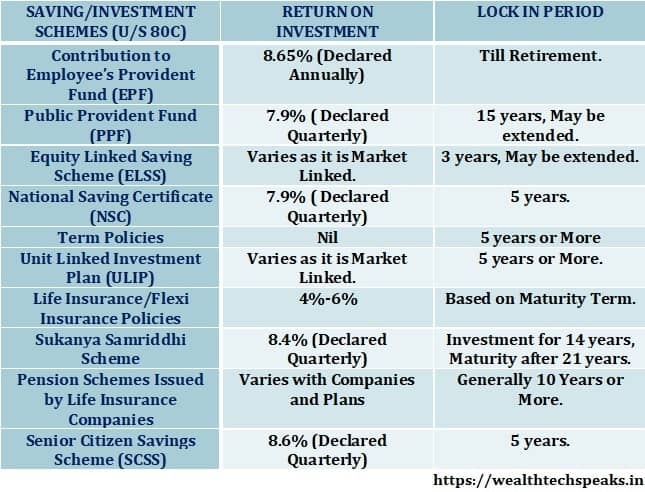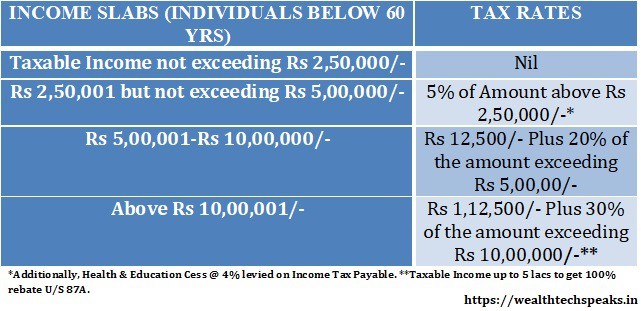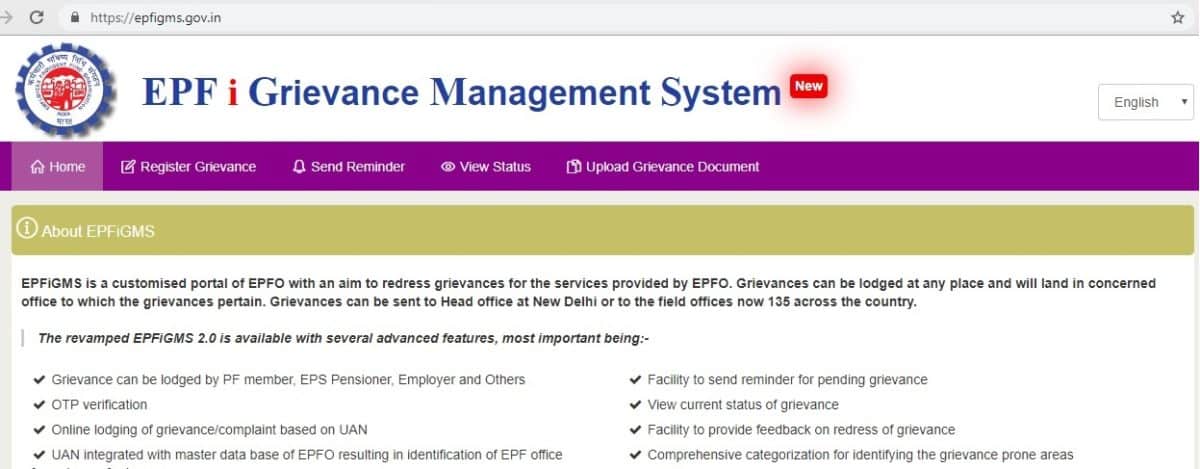
Balance Scorecard (BSC) Performance Management System
- Posted By Amritesh
- On April 1st, 2018
- Comments: 7 responses
Balance Scorecard (BSC) is widely used as strategic business management and planning tool to analyze critical areas of business. BSC helps organizations to set the desired performance benchmark which would enable them to achieve pre determined Strategic Targets and gain competitive edge over the peers. Balance Scorecard (BSC) was introduced in the 1992 by Kaplan and Norton. Prior to it, an organization “Analog Devices” had designed something similar in 1987. BSC aims at providing a balanced perspective about the organizational goals and performance. Today, Balance Scorecard (BSC) Performance Management System is widely used by Organization for Strategic Management Planning.
Performance Management System (PMS)
Earlier, only the Financial perspectives were taken into consideration to understand the position of the business. However, concentration on just one aspect of business would never really give a true picture of the entire business. Moreover, modern business practices have turned more complex with short term objective not necessarily being effective without a sound long term plan. Thus Balance Scorecard is not essentially a substitute of financial factors rather it is the aggregate of the Business objectives.
BSC is designed and used as Strategic Tool by the organizations to;
1.) Communicate the Objectives of the Organization to the Stakeholders.
2.) Alignment of the Individuals Output with Organizational Goals.
3.) Evaluation of the Strategy and Performance Setting
4.) Measurement of Performance, Feedback, Gaps, Achievements
Balance Scorecard (BSC) Design
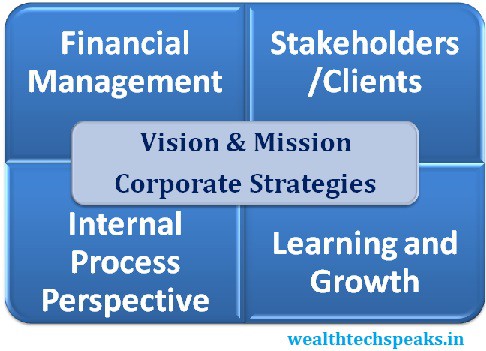
The first generation of BSC adopted the “Four Quadrant” based approach which would be used to identify the parameters on which the Strategy is to be evaluated.
Financial Management (Resources): Previously, Financial Management was primarily restricted to control of costs, expenditure, generation of revenue, taxation, audit and anything related to finance. But in the modern scenario, it assumes even larger meaning as it also entails optimum use of resources available within the organization. Even use of technology and automation to reduce cost and eradicate uncertainty associated with Financial Management.
Clients/Stakeholders: They are of utmost importance to the organization. The business is largely dependent on the image an organization holds in front of the customers and stakeholders. This entails the quantum of revenue, investment and relation Business may build over a period of time.
Internal Business Process: Focus is primarily on operations within the organization. Use of technology and processes to improve efficiency and maintenance of quality is a priority for the Business. This also requires structuring effective workflow to manage the business for timely execution of plans.
Organizational Development & Transformation: Infrastructure and Technology advancements facilitate transformation within the organizational setup. Human Capital skills are evaluated and Training programs is organized to improvise the expertise of the Individuals. Help create a favorable work environment which would ensure that Individuals perform to their very best.
Strategic Objectives and Mapping
BSC was evolved further to align the Strategic Objectives with the Strategic Mapping which allows the Organization to translate the plans into action. This actually paves way to measure the actual performance against the set Benchmark, identify the deviation and gaps, locate the critical aspects which need special attention.
Key Benefits:
1.) Imbibes Vision and Mission in the Strategic Goals.
2.) Removes Ambiguity in Business Communication.
3.) Organization and Individuals strive towards achievement of Common Goal.
4.) Performance may be measured, evaluated, revised against the pre defined Benchmark.
Balance Scorecard (BSC) Performance Management System
Balance Scorecard (BSC) has not only found relevance as Strategic Business Management System rather it is evolved into a comprehensive Performance Management Tool which is simple yet effective to evaluate the performance of the Individuals. The BSC is effective in aligning the Business Strategy with the Individual’s Goals to remove ambiguity and drive towards Common Objectives and Vision. The Balance Scorecard helps to monitor the performance against the given benchmarks to ascertain the Individuals contribution to the organization. The Balance Scorecard may seem complicated but it is one of the most simple and cost effective performance management tool. BSC is typically a comprehensive Performance Management tool which takes a holistic view of the Business Operation and Individual’s role in the same.
Designing Balance Scorecard (BSC) Performance Management System
Basic Parameters for Performance Management Evaluation
BSC based Performance Management System (PMS) primarily stands on the 4 basic perspectives, Financials, Stakeholders, Operations and Learning & Growth.
These four perspectives need to be mapped to the Business Objectives and Strategy. This would ensure that the Performance of the Employees is in alignment with the Organization’s Mission and Vision.
The 4 perspectives are well thought of aspects in my opinion as they cover critical aspects of any business. However, the relevance and significance could vary based on the Business Model.
Measure of each perspective provides in depth knowledge about the viability and feasibility of the process adopted within the Organization framework. Focus is on development of structured approaches to address the same. The perspectives are required to be mapped to the organization’s strategy and planning. This is when the need for Strategic Mapping becomes critical for the organization.
Strategy Mapping of Key Performance Indicators (KPI)
The most critical aspect of the BMS based Performance Management System (PMS) is identifying the KPI (Key Performance Indicators) relevant to the Industry which would impact the Business. These KPI forms the measure of the performance of an Individual and identify the gaps. The Goals set for Individuals should be based on the KPI required for the role.
Measurement of KPI will help in identifying the Performance of the Individuals, variance in achievement and expectations, develop a roadmap for the future in order to achieve the Organizational Objectives.
The KPI and Goal setting should be realistic and related to the Common Organization Objectives.
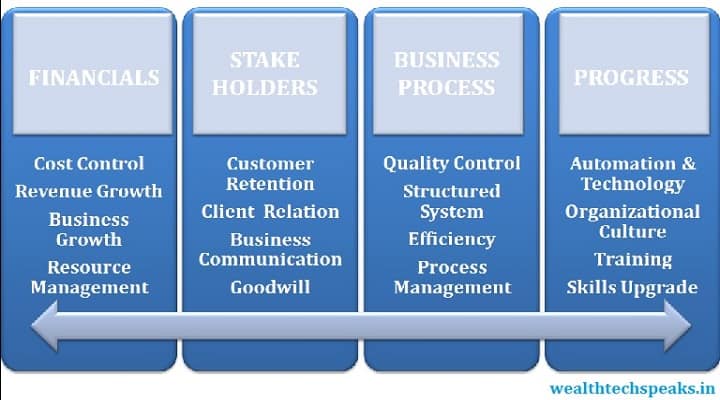
Rating Scale
Employees need to be given rating on the perspective set for measurement of the performance. First, Employees are required to rate themselves on the assigned parameters basis the work or task they have performed for the concerned period. It provides an opportunity to the Employees to understand and evaluate their performance and identify the gaps in expectation and achievements.
Appraisers also need to evaluate the performance of the Employees on each of the parameters and provide an overall rating. They are also required to have one to one session with the Appraisee to understand their points of view and ratings (Self Evaluation) before awarding their score.
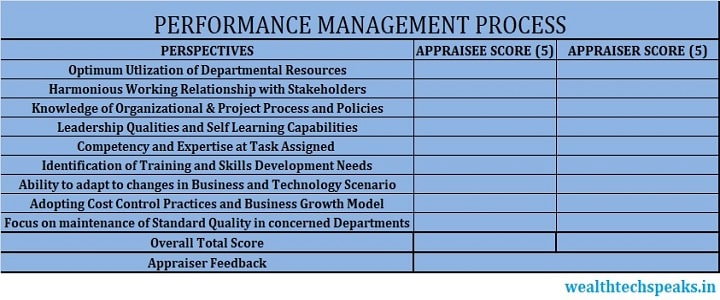
Highest Rating is 5 (Signifying Top Performer) with 1 being the lowest denoting Poor Performance.
Band
Well, this is one of the controversial topics in my opinion. As awarding of the Band is not only dependent on the Individual Score or Performance but is also interdependent on the other factors such as Performance of the Peers, Budget, Pre-Defined Parameters for awarding the Band.
However, I will try and cover the probable method adopted to measure the same in my upcoming posts, do subscribe and keep following for more. Balance Scorecard (BSC) Performance Management System is preferred by many of the organization as it is simple yet effective Strategic Tool.

